The new SoftiMAX STXM
The main branch at SoftiMAX provides an energy range of 275 eV – 2500 eV, and polarisation modes linear horizontal/vertical, inclined, and circular.
A new STXM system will go into commissioning in the Fall 2025 period. The end-station will initially be open for general users for the following methods only:
| Method | Detectors | Sample environment |
|---|---|---|
| STXM with a focal spot size of 30 nm and upwards | PMT (full range) | Magnetic field (415 mT in-plane and out-of plane)* Sample heater (Norcada), up to 1100°C |
| Ptychography | Tuscen Dhyana 95 (275 – 900 eV), direct detection; back-illuminated sCMOS, up to 24 fps; 2048 x 2048 pixels, 22.528 × 22.528 mm; 11 µm pixel size. EIGER LGAD (500 – 2500 eV, 512×512, 75 μm pixel size) Andor Zyla 5.5 (500 – 2500 eV), with FOP (3 µm channel diameter) and P43 scintillator (5 µm thickness); front-illuminated sCMOS, up to 100 fps; 2560 x 2160 pixels, 16.6 x 14.0 mm | Magnetic field (415 mT in-plane and out-of plane)* Sample heater (Norcada), up to 1100°C |
*The magnet system will restrict the energy range.
Please contact beamline staff to discuss the details of the experiment, in particular if sample environment is required.
The SoftiMAX-CXI open port
The second branch at SoftiMAX is offered as an open port for external user end-stations:
| Energy range | 275 eV – 2200 eV |
| Beam size (focus) | 20 μm × 20 μm |
| Beam height (focus) | 1404.8 mm |
| Beam inclination | +2 deg |
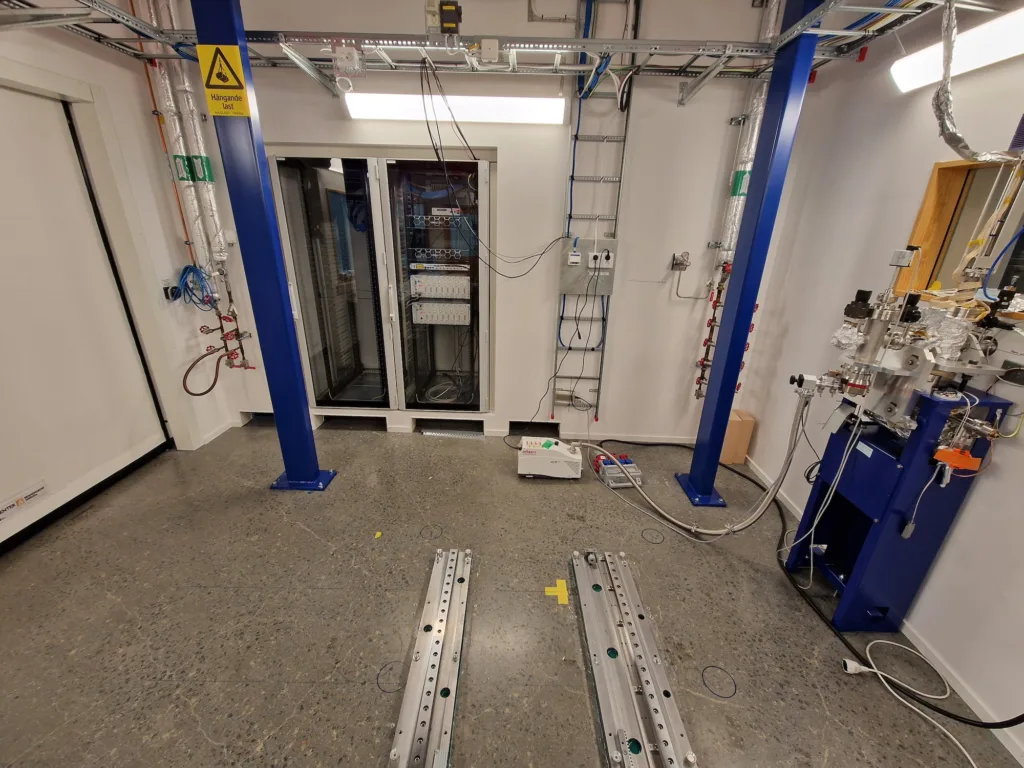
SoftiMAX-CXI open port area
The first SoftiMAX STXM (paused)
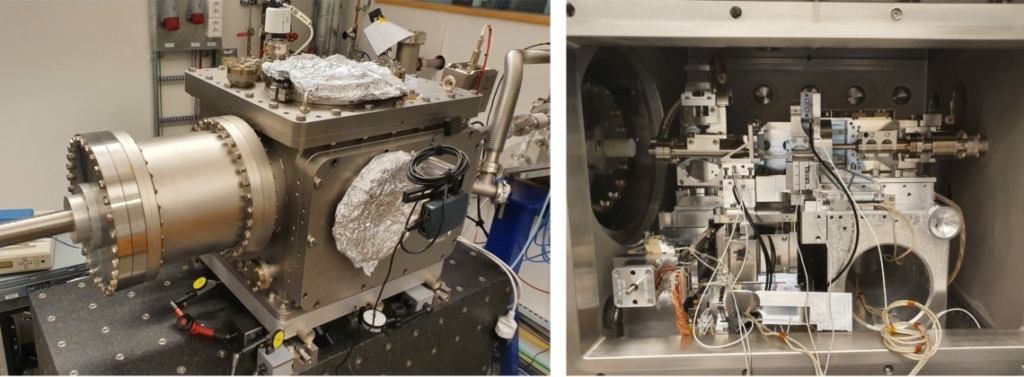
The original SoftiMAX STXM end-station is temporarily retired. We hope to upgrade this one soon, so that STXM and Ptychography imaging techniques are available here too.
STXM mode
The STXM mode uses the PMT detector, and is limited in resolution by the spot size of the illumination. At 300 eV, the smallest spot size is about 30 nm, between 700 eV and 1600 eV, the smallest spot size is about 22 nm, and above 1600 eV the smallest spot size is about 60 nm. STXM can provide absorption contrast. The energy resolution is better than 50 meV in the commissioned energy range.
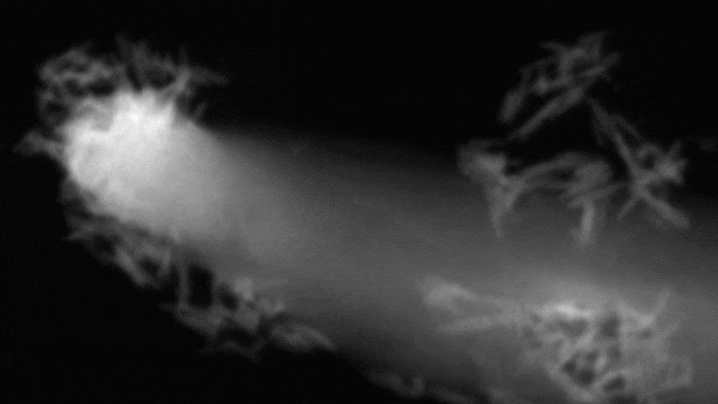
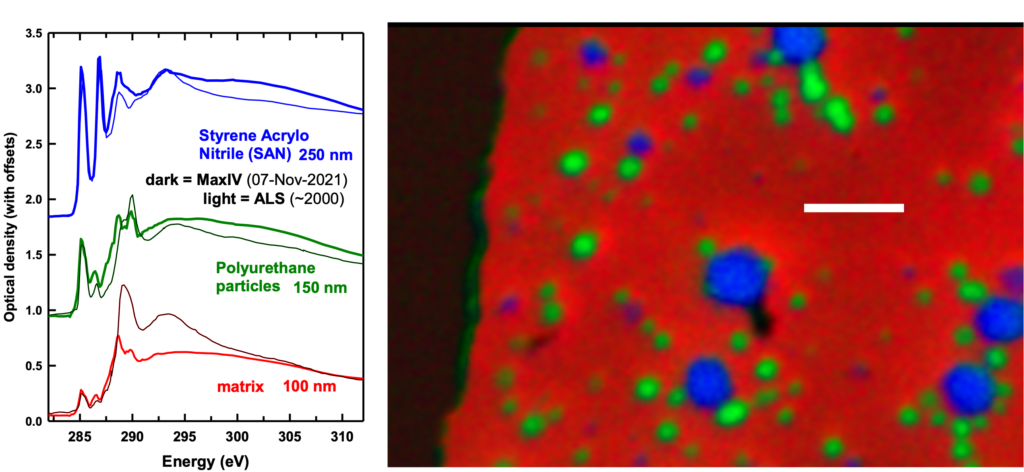
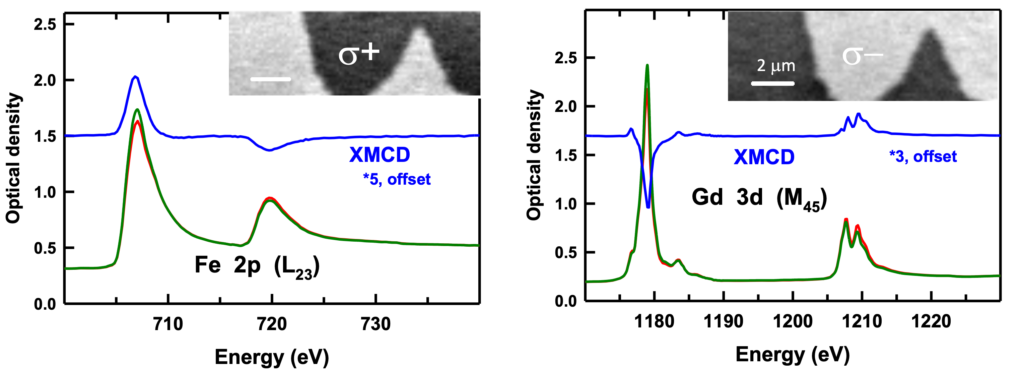
Ptychography mode
The Ptychography mode uses a pixel detector; Currently the Andor Zyla is available. The sample can be moved out of focus to adjust the illumination spot size and the overlap. The detector distance can also be varied. The data can be analyzed on the MAX IV computing cluster using the Ptypy-package. Ptychography can provide both absorption and phase contrast.
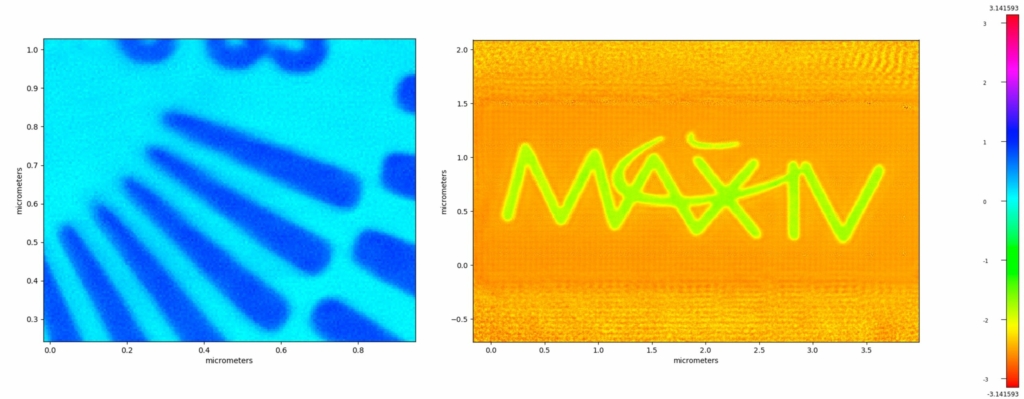
The following detectors are available:
| Detector type | Model and specification |
|---|---|
| Photodiode | Opto Diode Corp AXUV20HS1 |
| PMT | Hamamatsu H3164-10, with P43 scintillator |
| 2D detector | Andor Zyla 5.5, with FOP (3 µm channel diameter) and P43 scintillator (5 µm thickness); front-illuminated sCMOS, up to 100 fps; 2560 x 2160 pixels, 16.6 x 14.0 mm; The detector distance can be varied between 33 mm and about 150 mm. |
| 2D detector | Tuscen Dhyana 95, direct detection; back-illuminated sCMOS, up to 24 fps; 2048 x 2048 pixels, 22.528 × 22.528 mm; 11 µm pixel size. Under commissioning |
| SDD | Amptek X123 Fast SDD,70 mm2; C2 window (Si3N4). Under commissioning |